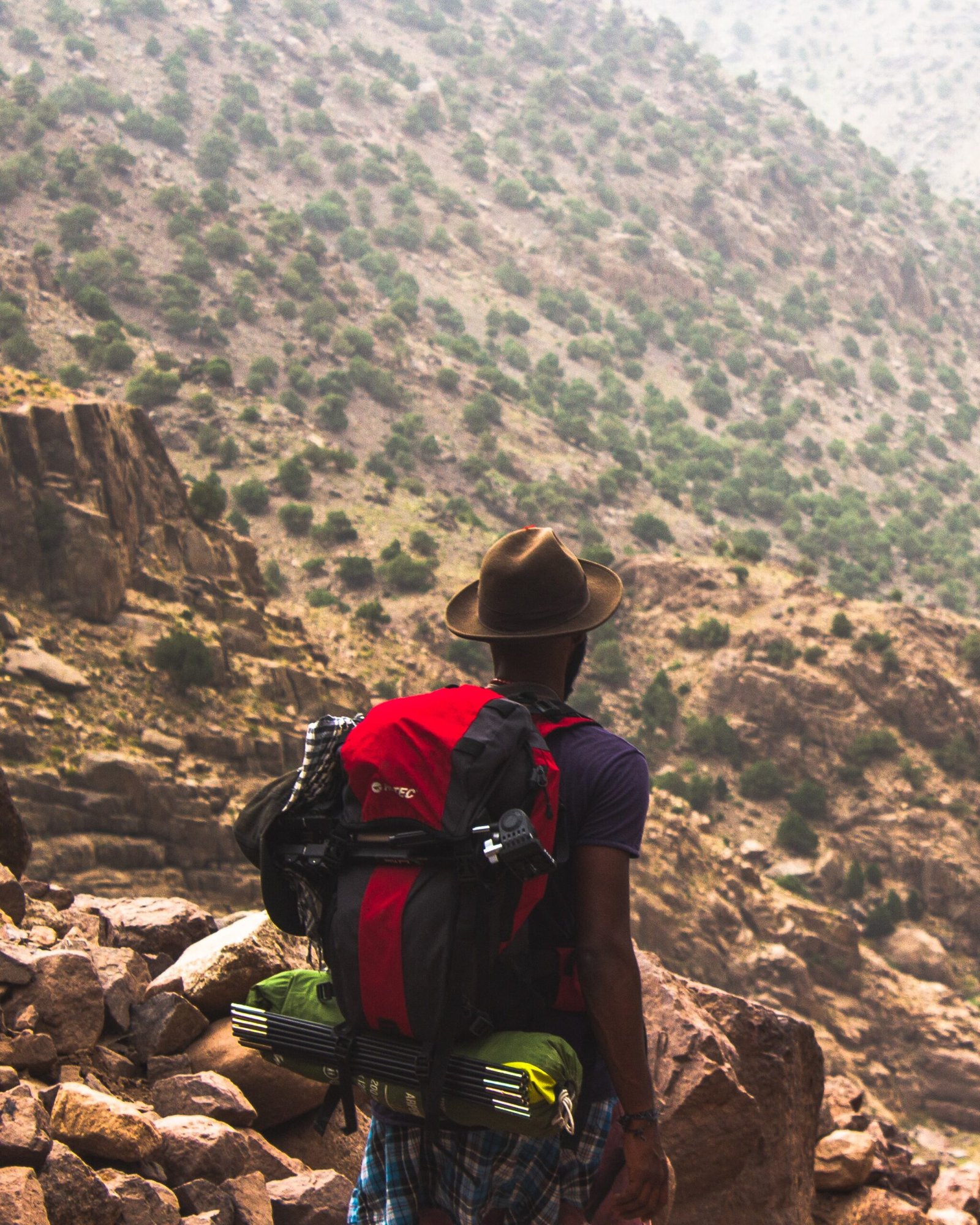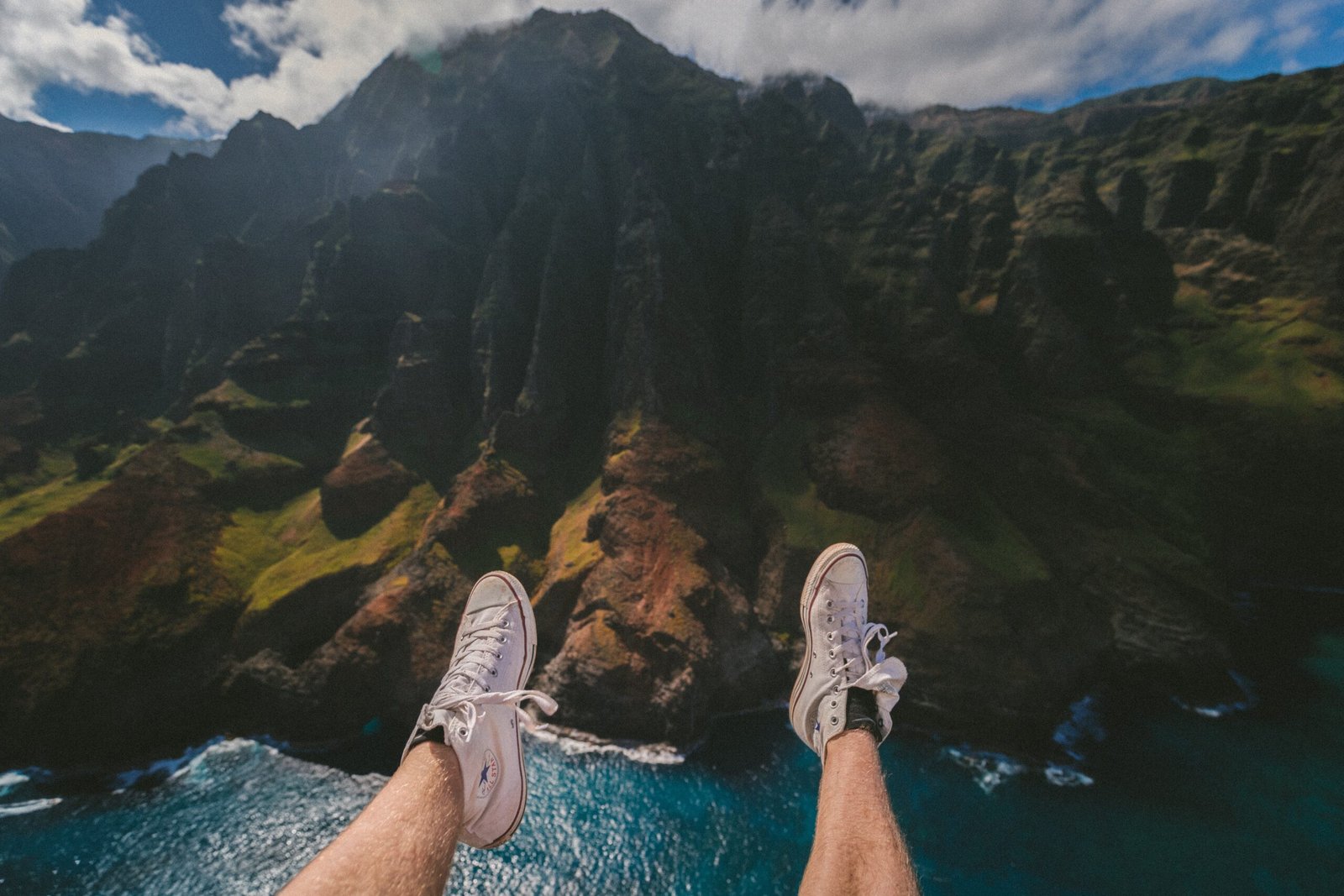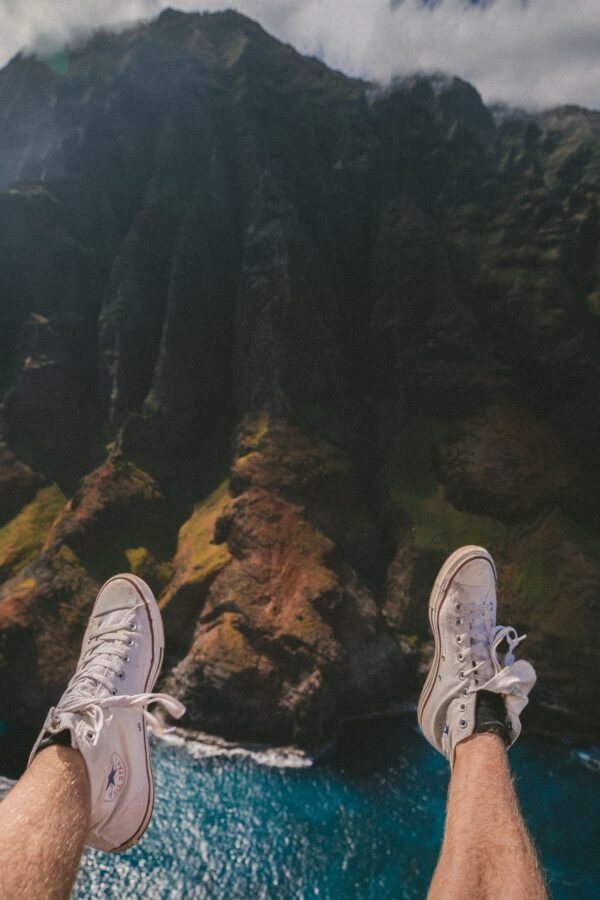This article discusses the thrilling sport of cliff camping, where individuals sleep on the side of cliffs suspended hundreds of feet in the air. The author shares their own experience of cliff camping, describing the breathtaking views and the unique challenges that come with this extreme sport. The article also highlights Kent Mountain Adventure Center in Estes Park, Colorado, which offers cliff camping adventures to the public. The owner of the center explains how cliff camping has become a popular bucket-list adventure for those seeking a truly unforgettable experience. Whether you have climbing experience or not, cliff camping offers a thrilling and heart-pumping adventure for those who are willing to take the plunge.
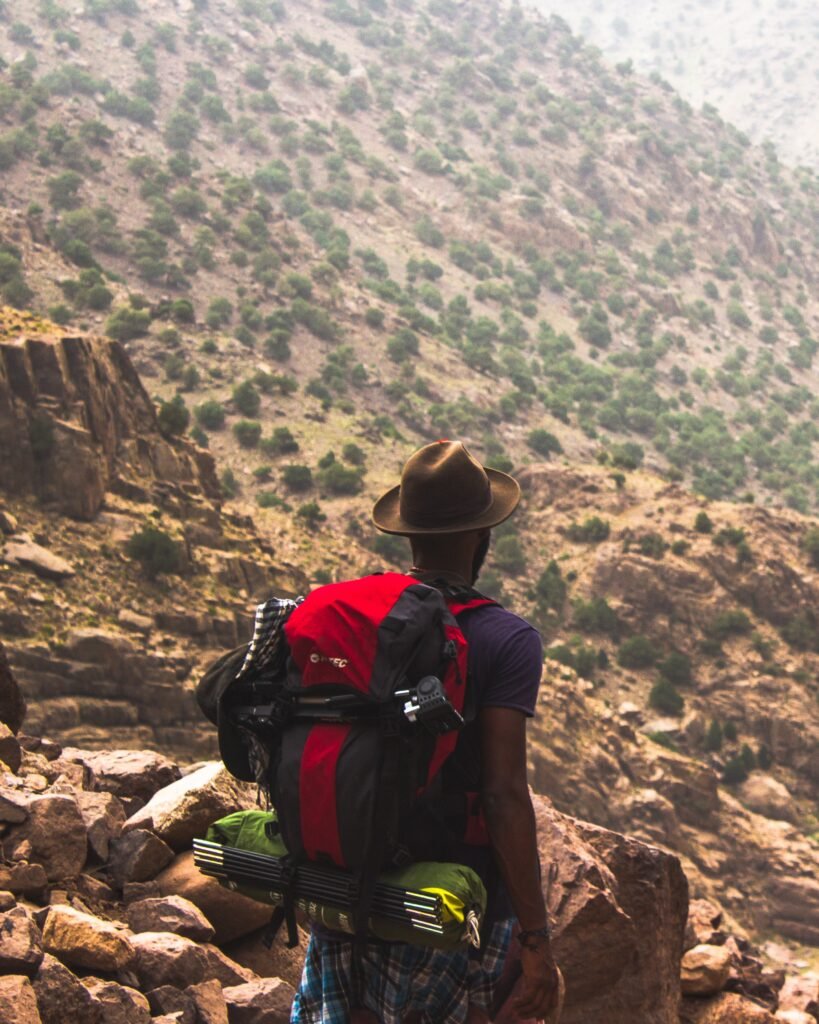
Heading 1
Introduction
Cliff camping is an exhilarating and extreme form of outdoor adventure that takes camping to new heights, quite literally. Instead of setting up a tent on the ground, cliff campers pitch their tents on the side of cliffs, offering breathtaking views and a unique camping experience. This article will provide an overview of cliff camping, including the benefits, challenges, required skills and equipment, popular locations, safety considerations, and tips for getting started.
Overview of Cliff Camping
Cliff camping is not for the faint of heart. It requires climbers and outdoor enthusiasts to climb and rappel down cliffs to find a suitable camping spot. Once there, they set up their tents on specialized portaledge systems, which are secured to the cliff face. These systems typically consist of a nylon cot or platform that hangs over the edge of the cliff, providing campers with an awe-inspiring view. Cliff camping allows adventurers to sleep and spend the night suspended in the air, surrounded by nature’s beauty.
Benefits of Cliff Camping
One of the main benefits of cliff camping is the unparalleled views it offers. Sleeping on the edge of a cliff allows campers to wake up to breathtaking sunrises and fall asleep under a blanket of stars. The isolation and sense of peace that comes from being high above the ground can be incredibly rejuvenating and therapeutic. It is an opportunity to disconnect from the chaos of everyday life and connect with nature on a deeper level.
In addition to the stunning views, cliff camping also provides a sense of adventure and adrenaline rush. It is an extreme form of camping that pushes campers outside their comfort zones and challenges them both mentally and physically. Cliff camping requires problem-solving skills, physical endurance, and a willingness to face fears. The sense of accomplishment and personal growth that comes from successfully cliff camping can be incredibly rewarding.
Heading 2
Challenges of Cliff Camping
While cliff camping offers unique rewards, it also comes with its fair share of challenges. The first major challenge is the physical fitness required. Cliff camping involves climbing and rappelling down steep cliffs, which requires strength, endurance, and agility. Campers should be prepared for long hikes to reach the camping location and should have experience in rock climbing and rappelling techniques.
Another challenge is the weather. Cliff camping is inherently weather-dependent, as high winds, rain, or other adverse conditions can make it unsafe or uncomfortable. Campers must be prepared for changing weather conditions and have appropriate gear to protect themselves from the elements. Additionally, the rugged terrain and unstable surfaces can make finding a suitable camping spot challenging.
Required Skills and Equipment
To engage in cliff camping, campers must possess certain skills and have the appropriate equipment. Climbing and rappelling skills are essential, as campers must navigate steep cliffs safely. This includes knowledge of rope management, knot tying, and proper climbing techniques. Prior experience in rock climbing is highly recommended.
In terms of equipment, climbers will need a specialized portaledge system, including a nylon cot or platform, ropes, carabiners, and harnesses. Campers should also have appropriate camping gear, such as a sleeping bag, camping stove, food, and water. Safety gear, including helmets, harnesses, and belay devices, is crucial to ensure a safe experience.
Popular Cliff Camping Locations
There are several popular cliff camping locations around the world that offer stunning views and challenging terrain. Yosemite National Park in California, USA, is renowned for its cliff camping opportunities, with the legendary El Capitan being a highlight for many climbers. Other notable locations include Zion National Park in Utah, USA, and the Dolomite Mountains in Italy.
Each location offers unique geological features and scenery, making them ideal for cliff camping. It is important to research and choose a location that suits both the skill level and preferences of the campers. Some locations require permits or the guidance of experienced guides, so it is crucial to plan ahead and make necessary arrangements.
Safety Considerations
Safety is of paramount importance when it comes to cliff camping. Due to the inherent risks involved, it is recommended to have prior experience in rock climbing and rappelling techniques. Campers should always assess the weather conditions and be prepared to cancel or postpone their camping trip if the conditions are unfavorable.
It is crucial to have the appropriate safety gear and knowledge of proper techniques. This includes using helmets, harnesses, and belay devices to ensure a secure and safe experience. It is also essential to have a comprehensive first aid kit and knowledge of basic first aid techniques.
Preparation and Planning
Proper preparation and planning are essential to a successful cliff camping experience. This includes researching and selecting a suitable location based on skill level and preferences. It is advisable to consult experienced climbers or hire a professional guide to ensure safety and make the most of the camping trip.
Creating a detailed itinerary is essential to stay organized and ensure that all necessary equipment and provisions are packed. The itinerary should include information on the camping route, estimated hiking and climbing times, rest breaks, and contingency plans in case of emergencies or unexpected events.
Getting Started with Cliff Camping
For beginners who are interested in cliff camping, it is recommended to start with rock climbing and rappelling courses to acquire the necessary skills. These courses will provide a foundation of knowledge and techniques that will build confidence and ensure a safer experience.
Joining a guided cliff camping trip is another great way to get started. Experienced guides can provide valuable insights, ensure safety, and offer support throughout the adventure. They can also provide the necessary equipment, which is particularly beneficial for beginners who may not have all the required gear.
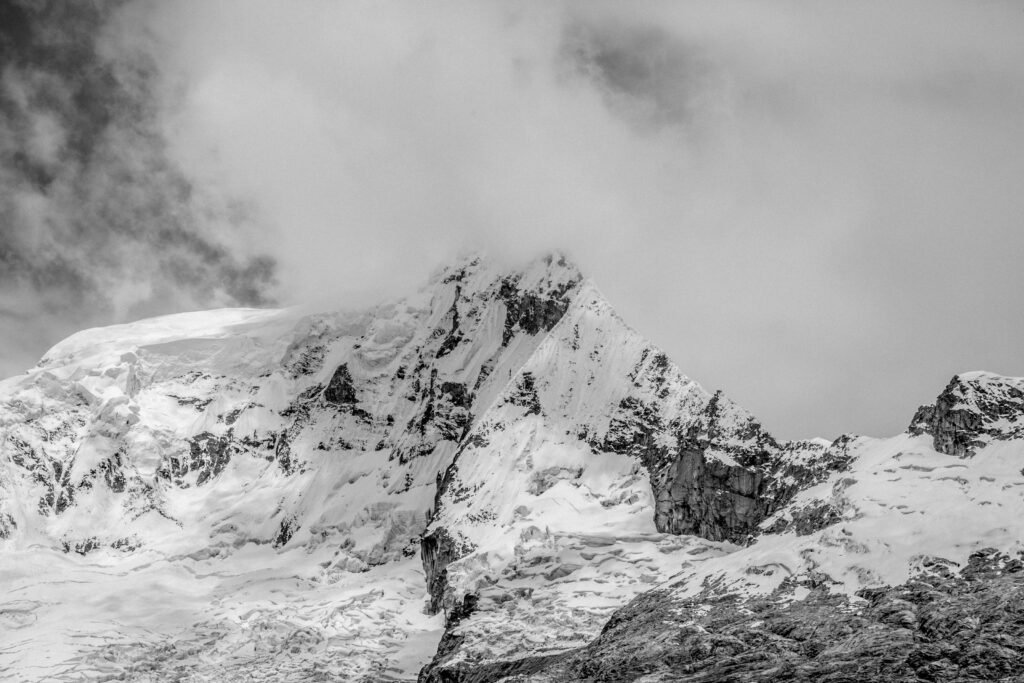
Heading 3
Introduction to the Challenges of Cliff Camping
While cliff camping offers a unique and thrilling experience, it is important to acknowledge the challenges and risks associated with this activity. Cliff camping requires a set of specialized skills, physical and mental preparation, and a thorough understanding of the risks involved.
Climbing and Rappelling Skills
Climbing and rappelling skills are paramount for cliff camping. Campers must be comfortable with rock climbing techniques and have a good understanding of rappelling. Climbers should have knowledge of rope management, knot tying, and belaying techniques to ensure their safety while ascending and descending cliffs.
Prior experience in rock climbing is highly recommended before attempting cliff camping. Beginners should consider taking rock climbing and rappelling courses to gain the necessary skills and familiarity with the equipment.
Essential Gear for Cliff Camping
Having the appropriate gear is crucial for a safe and enjoyable cliff camping experience. Climbers need specialized portaledge systems that include a nylon cot or platform, ropes, carabiners, and harnesses. A comprehensive list of camping gear, including a sleeping bag, camping stove, food, and water, is also necessary.
Safety gear, such as helmets, harnesses, and belay devices, is vital to protect campers from potential accidents. It is essential to invest in high-quality gear and regularly inspect and maintain it to ensure its integrity.
Choosing the Right Cliff Camping Location
Selecting the right cliff camping location is crucial to the success and enjoyment of the experience. Campers should consider the difficulty level of the climbing routes, the terrain, and the scenery when choosing a location. It is important to research and gather information about the location, including weather conditions, permits required, and any regulations or restrictions.
Experienced climbers may opt for more challenging locations, while beginners should choose locations that offer easier climbs and well-established camping spots. It is advisable to consult with experienced climbers, professional guides, or local climbing organizations for recommendations and advice.
Important Safety Precautions
Safety should always be the top priority during cliff camping. Campers must assess the risks associated with the location, weather conditions, and their own physical and mental capabilities. It is important to be honest about personal limitations and not push beyond them.
Campers should always wear appropriate safety gear, including helmets and harnesses. They should also have knowledge of proper techniques for rope management, knot tying, and belaying. Regular training, practice, and equipment checks are essential to maintain safety standards.
Creating a Detailed Itinerary
A detailed itinerary is essential for a successful cliff camping trip. Campers should plan their route, considering both ascent and descent routes, estimated hiking and climbing times, and rest breaks. It is crucial to allocate enough time for all activities and contingencies, such as unexpected weather changes or emergencies.
The itinerary should also include information about nearby amenities, water sources, and emergency contact information. Sharing the itinerary with a trusted friend or family member who is not participating in the trip is an additional safety measure.
Selecting an Experienced Guide
For beginners or those less experienced in cliff camping, hiring an experienced guide is highly recommended. Experienced guides can provide valuable knowledge and guidance, ensuring safety and offering support throughout the trip. They can help assess risks, plan routes, and provide necessary equipment.
When selecting a guide, it is important to choose someone with extensive experience in cliff camping and a good reputation. Checking reviews and testimonials, as well as asking for recommendations from local climbing organizations or fellow climbers, can help in the selection process.
Understanding the Risks Involved
Cliff camping involves inherent risks that campers must be aware of and understand. These risks include falls, rockfall, adverse weather conditions, equipment failure, and medical emergencies. It is important to recognize and assess these risks before embarking on a cliff camping trip.
Climbers must educate themselves about potential dangers and take necessary precautions to minimize risks. This includes wearing appropriate safety gear, adhering to proper climbing techniques, and staying informed about weather conditions. It is also important to have a comprehensive first aid kit and knowledge of basic first aid techniques.
Physical and Mental Preparation
Physical and mental preparation are key to a successful cliff camping experience. Cliff camping requires a certain level of physical fitness and strength due to the challenges of climbing, rappelling, and hiking. Campers should engage in regular exercise, focusing on activities that build strength, endurance, and flexibility.
Mental preparation is equally important. Campers must be mentally prepared to face challenges, overcome fears, and make quick decisions in potentially dangerous situations. Building mental resilience and practicing mindfulness techniques can help campers cope with the physical and mental demands of cliff camping.
Tips for a Successful Cliff Camping Experience
- Start with rock climbing and rappelling courses to acquire the necessary skills and knowledge.
- Join a guided cliff camping trip to gain experience and receive professional guidance.
- Research and choose a suitable location based on skill level, terrain, and preferences.
- Invest in high-quality gear and regularly inspect and maintain it for safety and performance.
- Be prepared for changing weather conditions and have appropriate gear to protect against the elements.
- Create a detailed itinerary, including routes, estimated times, and contingency plans.
- Share the itinerary with a trusted friend or family member and keep emergency contact information handy.
- Prioritize safety at all times, including wearing appropriate safety gear and practicing proper techniques.
- Educate yourself about potential risks and take necessary precautions to minimize them.
- Engage in physical and mental preparation to build strength, endurance, and resilience.
By following these tips and guidelines, campers can have a safe and enjoyable cliff camping experience that pushes their limits and provides an unforgettable adventure in nature.

